Sixth Status Report on the Project 'KEEP THE READING QUEUE UNDER CONTROL', with this month the subtitle of, The Wheels are Being Realigned.
As always - the last fortnight entries and The Next Up Reading List in full.
Successes
- Finally finished my review of The Freezer, Kim Hunt which delay was everything to do with my workload and nothing whatsoever to do with what a great series this is!
- So many new releases upcoming, it's almost impossible to mention them all. Have a look at the last newsletter: June 2025 Update for some of them and then the Last Fortnight listing for those that came after.
- Read for review The Sunbaker by P.A, Thomas which is a very good follow up to The Beacon.
- Read for review Broke Road by Matthew Spencer which is another very good follow up - this time to Black River.
-
Caught up on some reading / reviewing:
- Eden, Mark Brandi - this is very very good
- Kataraina, Becky Manawatu - follow up to the stunning AUĒ this is brilliant. Difficult but brilliant
- The Deadly Dispute, Amanda Hampson - fun / lighter side, 3rd Tea Ladies novel
- Hell's Bells, Jill Johnson - love this series / the main character is wonderful
- Gaslight, Femi Kayode - this was a "for me" read which was much overdue.
- Nemesis, Patricia Wolf
- Catching up with quite a few reviews - the latest of which you can see at: All the Reviews
- Managed to limit myself at the library which I realise is an odd sort of success, but you take your wins...
Failures
- Haven't finish enough reviews including The Other Mother & Never Forget by Michel Bussi, 17 Years Later, J.P. Pomare (next to be finished off) and a hell of a lot more.
- Didn't manage to get to an older book (AGAIN!)
- Need to extract the reading digit on the plan below.
Plan
- The Body Next Door, Zane Lovitt (currently reading this)
- Ripper, Shelley Burr
- A Divine Fury, D.V. Bishop
- Outrageous Fortunes, Megan Brown and Lucy Sussex
- The Forsaken, Matt Rogers
- The Secret of the Angel Who Died at Midnight, Rosy Fenwicke
- The Deeper the Dead, Catherine Lea
- The Wolf Who Cried Boy, Mark Mupotsa-Russell
- Twisted River, James Dunbar
- The library list (which by some miracle is down to 2 books), the NetGalley list (around 6 books) and then all the other lists... including some of the very intriguing latest additions to the teetering piles.
In the last project update I mentioned a slight light at the end of the tunnel, which has enlarged a tad to feel like it might have a sliver attached to it. But I can feel rocking in the stacks. Off to get on with it.
The Freezer
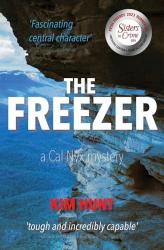
In the endless tracts of the New South Wales bushland Ranger Cal Nyx finds a dead body under unusual circumstances. It soon becomes apparent this is a historic death. Growing attention on the crime puts the blowtorch to a murderer who’s managed to evade justice. For now.
Detective Inspector Liz Scobie leads the police investigation while her partner, Nyx, uses her own considerable - some might say unorthodox - methods to chase down a killer. With speculation growing in the small community, someone privy to information becomes a new target for the killer.
Join Nyx and Scobie in their dogged pursuit of a bold predator with everything to lose.
The Freezer, Kim Hunt
The third Cal Nyx novel, THE FREEZER, would possibly work as a standalone, but the connections between this and the second novel, THE QUARRY in particular, make the characters here make a lot more sense. Nyx and her partner, DI Liz Scobie, her cousin Dif, and boarder Spike (complicated) are a great group of real feeling people and there's a backstory to how they all got here, together.
Hunt is from New Zealand, but this series is set in Australia - New South Wales - where Nyx is a ranger, working way out in the bush. She comes and goes from her city base, a house that was left to her, and the job, where, during a work outing to check the state of bush trails and general maintenance after a storm she comes across a dead body in unusual (maybe unless you're a ranger) circumstances. It may be an historic death, but the discovery creates attention, and a murderer who has evaded justice until now, is worried that may all be about to implode. Whilst Nyx's partner, DI Scobie is leading the police investigation, Nyx is busy deploying her own, somewhat unorthodox methods in a small community, where it turns out, something that she unearths becomes very dangerous information to know.
Nyx is one of those characters who leaps off the page at the reader. Physically capable, emotionally not always so much, she's loyal, hardworking, brave, and a bit daft on occasion. It's rewarding to read a female character who is independent, strong and good at her job, despite the physical challenges, and remote locations she's working in. Her partner, DI Scobie is a good cop too, and whilst they don't work "together" as such, they compliment each other, when Nyx isn't driving Scobie mad. And then there's Dif - who goes way back with Nyx, and is capable, and complicated all at the same time. That backstory from THE QUARRY would be handy to know although there are hints about the past and the reality of Dif's life in this novel.
All these books come with intriguing plots, and the build up of that cast of characters, with some social commentary sprinkled in there for good measure. They are a bit on the gritty side without falling into noir, emotional without being over the top, much like Nyx herself, who is very much a female working class hero.
The Sunbaker
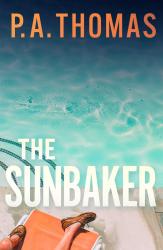
When overworked forensic pathologist Nicola Fox arrives for a long-overdue break at her holiday house in Brunswick Heads, on the NSW north coast, she's shocked to discover someone sunbaking on one of the sun lounges in her backyard. And that the sunbaker has been dead for some time.
Rumours soon emerge that the sunbaker took more than a few dark secrets to his grave, secrets many people - and especially the police - were keen to bury. When the arse-covering and finger-pointing begin in earnest, Nicola finds herself a suspect.
New to town, she only knows one person who might be able to save her: Jack Harris, a journalist at the local newspaper, The Beacon. When he begins investigating, the police organised crime unit arrives, and soon they are threatening both him and Nicola, leaving Jack to wonder if it was the police themselves who had committed the crime.
Can Jack uncover who really killed the sunbaker, and why the body was left in the backyard of a forensic pathologist, before the escalating threats to his own wellbeing become more than just threats?
The Sunbaker, P.A. Thomas
The second in the series, THE SUNBAKER is another one of those novels that could be read as a standalone, but add THE BEACON to your reading list anyway. For those that haven't yet had the pleasure, Jack Harris, disgraced son of a "major" media baron, was sidelined to the stable's least important paper - The Beacon - located in Byron Bay which turned into a happy career and personal move in the first novel. Caitlin is the lawyer daughter of the longtime, much admired editor of the paper, who met a very grisly end in that story, and she and Jack teamed up to solve that case, forming a firm friendship with a sprinkling of romantic attachment.
Fast forward to this second novel and Jack's ensconced as a journo in Byron Bay, and Caitlin's moved from her high-powered Sydney based job to work as a legal assistant to a local barrister. A high flyer in his own right, this barrister has some very dodgy clients, not that Caitlin has come across any of them. Fast forward a bit more, and local pathologist Nicola Fox heads out from Byron to her holiday home in Brunswick Heads only to discover a staged corpse lounging in a deck chair by her pool which, conveniently, points the finger of initial suspicion directly at her, but why are the organised crime squad suddenly in the picture?
There's a quote on the novel cover from William McInnes
'P.A. Thomas has a clinician's mind, a photographer's eye and the gift of great storytelling. A wonderful book'.
Given that the author has trained as a nuclear medicine specialist he does bring that clinician's mind to these novels. It's evident in the romantic frisson between the two main characters - Jack and Caitlin, prompted by medical complications. Making the romantic tension less will they / won't they and more can they? Then there's the prologue that comes with the sort of black humour that will undoubtedly ring bells with medical and ancillary support staff. Given that this is, though, the story of a series of bizarrely staged deaths, medical and forensic viewpoints are a big part of the picture, as is location and the people that keep popping up in unexpected places. This reviewer chooses to put the lock picking, housebreaking and hacking undertaken by Jack and his lifelong best friend Ricky down to that storytelling gift though.
The photographer's eye comes out in the sense of place, and the observational details scattered throughout the book. Whilst the main location for "The Beacon" newspaper and the cast of characters is Byron Bay, the crime all seems to be happening in Brunswick Heads. This gives the author a chance to draw a picture of tourist town Byron versus quiet, locals mostly, Bruns. There's a sense that crime would never happen in Bruns, and when it does, the laid back nature of the place reveals itself in the slightly haphazard observations of goings on. It also gives Thomas a chance to introduce a supporting cast of a Marilyn Monroe look-alike, way too many bands playing Simon and Garfunkel covers, and a persistent bin chicken.
Mind you, there's also the imposed humour of Caitlin's wish-list of daring doings, way too many of which require a head for heights, which Jack most definitely does not have. And then there's the distinct possibility that Jack's developing a thing for pathologist and prime suspect Nicola, which is pushing more than one or two of Caitlin's buttons.
It sounds like a lot but Thomas most definitely has a gift for storytelling. It's rollicking, fast paced, serving up of twists and turns, delivering a roller coaster of a reading ride with no sign of second novel jitters. The characterisations are great, the romantic tension believable and not at all offputting, and it's peppered with sly humour and clever hook lines. THE SUNBAKER bodes well for the life of an ongoing, long-running series.
Broke Road
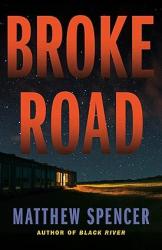
In Australia’s bucolic wine country, a homicide detective is on the hunt for a killer with a ruthless agenda in a gripping novel of suspense by the author of Black River.
A young woman is found dead in her isolated town house in rural Red Creek, an up-and-coming wine tourism destination outside Sydney. No forced entry. No signs of struggle. And her geologist husband has an alibi, though it’s not exactly solid. While a tabloid journalist is quick to spin her own damning narrative, homicide detective Rose Riley is questioning everything she sees—especially in a rapidly developing community that already seems on edge.
While Riley and her partner, Priya Patel, work the case with a local detective, crime reporter Adam Bowman follows his own leads. Then forensic evidence matches that of a pair of unsolved murders elsewhere in two other married women, murdered months apart yet in the exact same manner. Riley realizes she’s dealing with a serial killer. But one whose victims weren’t random. These women were chosen, watched, and targeted for a purpose.
As the secrets in this small town emerge, the suspects mount. Now Riley must unearth the deadliest secret of all—the true motive behind the murders—before another woman dies.
Broke Road, Matthew Spencer
BROKE ROAD is the follow up to the excellent BLACK RIVER, the opening salvo in the series, featuring the determined and dedicated DS Rose Riley, journalist Adam Beaumont, and a serial killer that didn't make this reviewer want to chuck that first book against a wall, hard.
Riley is back, with her sidekick Priya Patel, and Beaumont, this time in the wine tourism area of the Hunter Valley around Cessnock when a young woman is found dead in an isolated new townhouse, by her husband late one night. No forced entry and no signs of a struggle means that the husband is obviously suspect number one, and whilst a local tabloid journalist is busy spinning her own story about all of that, Riley is questioning everything and everybody. When Beaumont arrives on scene they slip back into the sort of working relationship that opened up in the first novel, collaborative without being unbelievable, cautious and friendly, Riley, Patel and Beaumont are joined by a local cop this time, in an investigation that takes some most unexpected turns along the way.
There are quite a few references back to the earlier novel, particularly in terms of how these three main characters met, and developed the friendship that they have. This novel also looks back a little further at Riley's own childhood, in this region, on a farm that was marginal, before the wine industry moved in and turned the place into a tourism mecca. There are nice touches of the clash between the old and the new, the old pub where Beaumont finds himself staying, compared to the swish new, hands off model motel where the women are staying. The older residents, many of whom have now found work, for the incomers, the big winemakers, the restaurateurs and the entrepreneurs. The differences between the region midweek and weekends when the tourists arrive, and finally the tension between the mining industry and the winemakers, something reflected in the household of the dead woman who worked in PR and marketing for the wine industry, and her coal mining geologist husband.
Whilst there is a lot going on locally, including some hefty doses of corruption involving some of those wealthy incomers, the police and the local media, the investigation finds tentacles outside the area - to Adelaide, Canberra and potentially other locations, and it's those leads that flush out some complicated connections. To say nothing of the goings on at the motel where RIley and Patel are staying. All of which makes up for a wild ride of a read, which for this reviewer, was basically a one sitting inhalation.
The balance between personal and professional here is great, as is the sheer slog of detective work, analysis and thinking outside the box that goes towards an investigation that could easily have got bogged in the local. The characters are great - flawed but not overtly so, dedicated, determined, and a bit messy along the way, these three are a great, and surprisingly believable team, given we're talking a journo and a couple of cops. The friendship is well portrayed, the interactions really fun to read, and the sense of place well executed.
Wine growing areas, where the tourists and the developers arrive in a landscape that's originally settled into marginal farming, with old families, old connections, and many layers of stories make for an interesting place to set a story that's about the murder of an incomer, a woman who on the face of it had no reason to die. Take that idyllic place, and stick in an undercurrent of sick, perverted weirdo's and you've got a well executed, disquieting novel that works on a number of levels.
NOTE: For the American audience that this has obviously been "edited" for - Shoes and Tires would be Shoes and Tyres here / for local audiences if you do happen to come across that edition, the shoes aren't looking for a lie in.... (Why publishers do this is beyond me, I mean we can "translate" the reverse - seems a bit disrespectful to suggest your reader's can't do the same ... ).
Eden
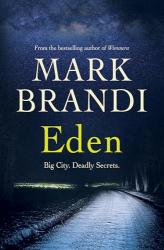
Big City. Deadly Secrets.
Cities are tough when you've grown up as a country kid. They're even tougher after nine years inside. Tom Blackburn is fresh out of jail and not sure where his future lies. He knows what he wants. But he's pretty sure she doesn't want him.
Tom's left his old life and his old name behind. But his options aren't great. He knows sleeping on the streets is the quickest way back to a cell. And then, his luck turns around. A chance encounter leads to a job and somewhere to stay. A place in the dead centre of Melbourne. Eden, his new boss calls it.
Honest, physical work. Bit of gardening, bit of gravedigging, bit of whatever he's told to do. Fresh air, currawongs, a bed and some peace and quiet. It's the perfect place to save some money and make some plans. A place to keep his head down and stay out of trouble.
But trouble finds him. Serious trouble. He's missed the signs, again. Going back to jail might be the safest option. Unless he can figure some way out of the danger he's in . . .
Eden, Mark Brandi
Mark Brandi has always been a writer of great male characters, from Ben and Fab in his standout debut WIMMERA, to Jimmy in SOUTHERN AURORA, Anton and Steve in THE RIP and Jacob in THE OTHERS, they are very real people. He's also not afraid to portray these boys and men as sometimes victims, sometimes perpetrators, struggling, living difficult lives from difficult circumstances, often as a result of societal expectations and failures. As it is now for Tom in EDEN.
Recently released from jail after a long stint for a crime that is eventually revealed, he's lost and drifting, without family, and the only thing he really wants, to repair the fractured relationship with his girlfriend, complicated by the theft of the cash he'd saved while in jail, and her moving on in Queensland. Stuck in Melbourne, after one night only with a roof over his head, he's on the streets and looking at the distinct possibility of going straight back to jail, when a chance encounter suggests a good place to doss down is the cemetery off to the edge of the city. He's safe there, hidden away in a rotunda far inside the locked cemetery grounds, or so he thinks, until the next morning when he's awoken by head gravedigger Cyril, with friendship and a surprising offer. Tom soon finds himself a paid employee, living in the gravedigger's shed, seemingly on his way to that trip to Queensland and reconciliation, only there's always something, and it turns out that a spidery sense, the words and an avenue that might have helped him stay out of jail in the first place, don't quite work out the same way this time around.
There are hints, and clues along the way for the astute reader, as the details of Tom's past are revealed, along with the story of what's really going on in the cemetery. But it's the arrival of a journalist on the scene, a man who reported on Tom's original trial that blows everything up and puts Tom in a really tricky position. The dilemma for Tom is to talk about the past to a man hell-bent on publishing his story and outing the truth, or talk about the present, and put himself in real danger. All whilst absolutely, utterly and totally on his own.
The strength's of Brandi's previous characterisations - that depiction of perpetrator and victim, men and boys in extreme circumstances, coalesce once again in EDEN. There are a lot of flawed people around Tom and there's obviously something about a lone individual, recently released from a very long stint in jail, that puts them in a particularly vulnerable position. And then there are the sorts of men who sense vulnerability and exploit it. In the past and now again in the present. The reader can't help but be left fervently hoping that something changes in the future.
Kataraina
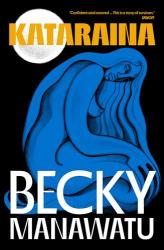
The much-awaited follow-up to the award-winning international bestseller Auē.
In Auē, eight-year-old Ārama was taken by his brother, Taukiri, to live with Kat and Stu at the farm in Kaikōura, setting in train the tragedy that unfolded. Ārama’s aunty Kat was at the centre of events, but, silenced by abuse, her voice was absent from the story.
In Kataraina, Kat and her whānau take over the telling. As one, they return to her childhood and the time when she first began to feel the greenness of the swamp in her veins — the swamp that holds her tears and the tears of her tīpuna; the swamp on the land owned by Stu that has been growing since the girl shot the man.
Unflinching in its portrayal of the darkness, tender in its harnessing of the hope that future generations represent, Kataraina is a stunning novel that confirms Becky Manawatu as one of the most talented and powerful writers working in Aotearoa/New Zealand today.
Kataraina, Becky Manawatu
Our ancestor once lived close to the
house where he was shot. She was at
the river when a man approached
her and offered her some peaches
from a can, but then he attacked her.
KATARAINA is the much anticipated follow up to the, frankly, gut-wrenching AUĒ, which at the time I reviewed it, and since then, whenever I return to the book I remember saying:
Understanding the meaning of the verb auē doesn't quite cover the visceral, gut-wrenching capacity of it in the way that the novel AUĒ depicts it. The characters in this novel experience it in all sorts of ways, including love, lamentation, surprise, annoyance, and sorrow.
When the publishers got in touch to say this follow up was now available, the news bought anticipation and the slightest sense of trepidation. Whilst reading AUĒ was truly a gut wrenching experience though, KATARAINA is similar, but different.
The backstory is that in AUĒ, eight-year-old Ārama was taken by his brother, Taukiri, to live with Kat and Stu at the farm in Kaikōura, setting in train the tragedy that unfolded. Ārama’s aunty Kat was at the centre of events, but, silenced by abuse, her voice was absent. In KATARAINA, Kat and her whānau (family) step forward to tell of their childhood, and the relationships between them and the land around them. In particular the nearby swamp, which reflecting stories from all First Nations, is part of their very being - as she puts it "she feels the greenness of the swamp in her veins". The swamp that is partly their tears, exists in the land owned by Stu, a place that has been part of their story since the girl shot the man.
AUĒ was also a family story, exploring violence, connection, separation and redemption. KATARAINA is a more reflective, complex undertaking, still within the contexts from the earlier novel, but looking more closely at the past, future, present connections that bind, separate and create that complexity. Whilst it's not necessary to have read the earlier novel to get the undertones in KATARAINA they are interlinked, a construction of their place and time, woven together by this family impacted by so much pain and suffering, looking always to their surroundings, their relationships with each other and the land - the country that supports, heals and hides them.
KATARAINA is also an incredibly clever novel, told from a number of perspectives, that span family history. It will beguile the reader, despite the unusual, fractured timelines in which the story is told. There is the central incident that is constantly referred to without explanation "the girl who shot the man", and the timeframes are mostly before, and after that event, with a secondary thread about field study days running alongside. At points throughout the novel the introduction referred to at the start of this review is expanded, providing more snippets about the girl, man, river, and the peaches. All of which sounds complicated, but the reading of it simply flows. You will bounce backwards and forwards but it's seamless, partly because it's beautiful reading, intricate yet lyrical, with the forward momentum held in the shimmer of "the girl's" identity. And the why. If "the girl shot the man". Why? And always that beautiful, involving, sensuous prose that was there even in the desperation of AUĒ and given permission to rage in the hope of KATARAINA.
Woven throughout this text, with a glossary at the end of the novel for those that really struggle, the beauty and pointedness of te reo Māori, and the Kāi Tahu dialect is front and centre. Readers new to the language will have to work a bit to pick up meaning from context, or break the flow of the story a little to refer to it. Some, like this reader, with an understanding of the meaning of some of the words, didn't want to move away, instead just went with the flow, picking up the unknown from the reactions of the characters and their intent.
There is so much to KATARAINA and your reviewer lacks the language and nuance that the author has such a firm grip on to truly explain the impact of a novel like this one. It, and it's predecessor are now lurking on my keep forever shelves, filled with bookmarks at points where the storyline was so intense, moving or simply illuminating that I'm going back to look at them over and over again. These novels, like the work of some of the stellar authors of our own First Nations people (Melissa Lucashenko particularly comes to mind), have given this reader a glimpse into the thought patterns, and an understanding of the world through eyes more connected to a land on which they have lived for so many generations. It's a more experienced, more aware, more nuanced view, and I profoundly hope that writers like this keep writing.
The Deadly Dispute
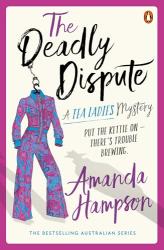
Murder and Mayhem on the waterfront.
It’s time for the Tea Ladies!
1967: Hazel’s new job at the docks quickly turns perilous when she stumbles into the criminal underworld that lurks beneath the surface. A million in gold coins has vanished from a cargo ship and a dead body washed up. Suddenly, she’s in over her head.
Disillusioned with her life, Betty is led astray by a charismatic new friend and finds herself exposed in more ways than one – until a crisis drags her back to reality.
Living in a high-class brothel, Irene gets wind of a threat that could destroy her livelihood. She takes on the Maltese mafia and becomes involved in a dangerously sticky situation.
When one of the tea ladies disappears, they face their greatest challenge yet, pushing their detective skills to the limit. It will take more than a glass of Hazel’s homemade wine to solve this one.
The Deadly Dispute, Amanda Hampson
The third book in The Tea Ladies Mystery Series, sees Hazel, Betty and Irene take on one of their most dangerous challenges yet, with a real threat to Hazel's life on more than one occasion, Betty finding herself naked in front of a lot of strangers, and Irene hoicking a Molotov Cocktail straight back to where it came from.
All of which might come as a bit of a surprise, even to followers of this lovely series of books, because these three are tea ladies after all. I mean who tries to drown or truss up tea ladies and shove them in wardrobes. Or pitch Molotov Cocktails at them (okay well that's Irene and you could be forgiven ...).
But it's 1967, Hazel has a new job as a part time tea lady at the docks, and there's been a million gold coins vanish from a cargo ship, and a young man whose mother is very worried about him. Meanwhile back where Hazel used to work, at Empire Fashions, Pixie's had enough of her mother's ridiculous interference and she's looking to spread her wings. At the same time the Tea Ladies Guild has a fundraising challenge on their hand's and Merl's behaving like a prat again.
Needless to say readers will probably have to have read the earlier books (THE TEA LADIES and THE CRYPTIC CLUE) to have any chance of knowing who is who and what's going on. That shouldn't be much of a trial though - take it from somebody who spent a fair bit of time thinking this series probably wasn't for me - only to find myself rapidly hooked - this is a lot of fun. The characters are wonderful women on the slightly older side, they have had their trials and tribulations, jobs that aren't seen as much but they value, and do well, friendships that go back or are newly formed, husband's who are regretted or cherished, and some nicely eccentric behaviours. Unlikely friends all of them, they rub along, as Hazel reflects on at the end of THE DEADLY DISPUTE:
As they sit in companionable silence, Hazel experiences a moment of the breathless panic she felt trapped in the blackness of that wardrobe. It's the memory of loneliness, more than the fear, that comes back to her vividly in the night, and occasionally in the day. She takes a deep breath and calms herself.
They are books about crime and investigation, they are also books about female friendship and companionship in good, hard and downright dangerous times. They are also light, fun and populated by vivid and very engaging women.
Glancing up from her jigsaw, she looks across the room at Irene stretched out on the sofa, puffing away on her cigar, and Betty, busy knitting for the orphans. She takes a moment to appreciate the ordinary loveliness of this time together and feels a sense of contentment settle on her. She is home in the truest sense of the word.
Hell's Bells
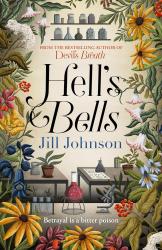
Eustacia Rose's life is beginning to return to normal: she is back teaching at UCL and her relationship with Matilde is blossoming. But when a man is found dead with a needle in his neck, that fragile peace begins to crumble. Eustacia finds a painting of herself with a syringe next to her neck and discovers that there are other people who seem to know more about the killing than they are letting on.
The threat around Eustacia only increases as a PhD student begins to stalk and harass her to gain access to her poisonous plant collection. After Eustacia continually refuses, he contacts a lab that is illegally selling synthetic plant toxins but turns up dead shortly after. As the body count rises, Eustacia has no choice but to investigate the deaths in earnest.
But murders aren't the only thing on her mind as interactions with a new detective cause tensions with Matilde that Eustacia has no idea how to resolve. What's more, run-ins with a mysterious white-haired women are making her recall long-buried memories. Eustacia must solve the mysteries of her past and this case if she wants to escape from this toxic situation unscathed.
Hell's Bells, Jill Johnson
The second novel in the Professor Eustacia Rose series, HELL'S BELLS is out, about and well worth reading. For those that haven't met up with this character before, her first outing was in the book DEVIL'S BREATH. The same elements are being explored again here, Rose's experience as a neurodivergent woman in a world not designed to be easy to navigate, full of personal interactions, a relationship that she really values, but doesn't know how to say it, and a return to work as a professor with students, and a research lab and all that brings with it.
If you've not read the earlier novel, then Rose is a Professor of Botanical Toxicology, whose particular interest, some might say obsession, is with obscure, poisonous plants. As with the earlier novel, this knowledge puts her partly in the role of expert, partly suspect when a man is found dead on the streets, with a needle in his neck. Then an increasingly erratic and dangerous young student who has been harassing and stalking Rose, is found dead, after buying illegal synthetic plant toxins, the likes of which he believed Rose was denying him access to, and she's right in the middle of a big mess that, of course, she'll have to resolve. Solving puzzles, understanding connections, setting things in order is exactly what Professor Eustacia Rose yearns to do, and in this case, there's a portrait painted with a hidden needle poised beside her neck to give her that extra bit of impetus. Although when it comes to intimate personal relationships she's lost and way out of her depth. Thank goodness for her kindly elderly neighbour and friend, deliverer of both impetus and potential solutions. Meanwhile the final mystery is another elderly white-haired woman that is triggering some very weird memories.
As with the first novel, Johnson writes her character in a matter-of-fact manner. She's observational, often mildly confused, and possessed of profound one-track mindedness. Which makes the question mark over her relationship with Matilde (who readers meet in the first novel), a distraction, until she's aware that it can no longer be such and it's time to make some moves. Guided by her gentle, but firm neighbour who it turns out is quite good friends with Matilde, again post events in the first novel.
If push comes to shove, HELL'S BELLS probably would stand alone, but really it would be a much better experience to read this series in order. Getting to know Professor Eustacia Rose is the key to understanding how the flow of these investigations work, why she spends so much time on her roof with now, just a telescope and a few easy to care for plants, and what's she's lost. Her beloved father dead, her mother vanished when she was a child, her life's purpose taking a battering in both novels, Professor Rose is a very relatable woman, with foibles, eccentricities and heaps of personal twitches, yet she's liked, even loved by those closest to her. If she can just work out what that means.
Gaslight
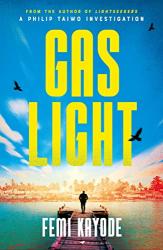
' We know you know. Talk and you're next.'
Bishop Jeremiah Dawodu, pastor of a Nigerian megachurch, has been arrested and charged with the murder of his wife, Folasade, the 'First Lady' of the church. The arrest was public, humiliating and sensational - sending shockwaves through Lagos - but throughout it all, Bishop Dawodu maintains his innocence.
Philip Taiwo, an acclaimed investigative psychologist, is asked by his sister, a member of the church's congregation, to clear the pastor's name. With no actual body, it looks to be a simple case and despite Philip's dislike of organised religion, he agrees to take it on as a favour to his sister. Then the First Lady's body is found in a nearby lake just as Philip's beloved family come under attack from someone warning him off the case, and he realises that nothing to do with this investigation will be straightforward.
Was it murder or suicide? Is someone framing the Bishop, or the First Lady?
Gaslight, Femi Kayode
Years (sadly) ago now I read the first book by Femi Kayode, LIGHTSEEKERS, and loved it. Partly because it was very much a whydunnit and partly because the central character, acclaimed investigative psychologist, Philip Taiwo is such an interesting take on an investigator. Having lived most of his life in the US, he's now in Nigeria, with his family, reconnecting with his families origins, and, to be frank, looking for somewhere that everyone else looks like them.
In GASLIGHT, that project is not going so well on a personal level, with a lot of tension in the family around his young daughter who is struggling with the change in life and loss of friends and connection. On the professional side he finds himself drawn into the investigation of the disappearance of the young wife of his sister's megachurch's pastor. Whilst it might look like a simple enough undertaking, it rapidly becomes complicated with the church rife with infighting and resentments, and it turns out, a hefty dose of corruption and worse.
No fan of organised religion himself, Taiwo has to walk a very fine line between the influence of the church, the charismatic nature of their pastor, his sister's devotion and his responsibilities to work and family. When the missing First Lady is discovered dead, and a direct attack is launched on Taiwo's family, he rapidly comes to understand the threat, and the way that churches of this kind wield their considerable power and influence. Mind you, there's also the question marks over the death. Suicide or murder and is someone framing the Bishop?
I find these such fascinating stories. Steeped in a sense of place and people that's seen through the eyes of an outsider who, for all the world, should be an insider. Taiwo is ethnically Nigerian but emotionally from elsewhere. The culture shock is as fascinating to him as to the reader, although considerably more confronting for his family, and his teenage daughter in particular. At heart a dedicated and loving father he's struggling with the difficulties of raising this girl, as his wife and daughter clash, and his daughter struggles to sort out her place in the world. Add to that an interesting look inside the world of the megachurches in Nigeria, and the power, influence and control they wield, and the way that they can manipulate, and be manipulated in their own right. The whole thing is nicely messy, complex and feels very real, very human, and all too believable, including the way that Taiwo struggles, even with his absolute understanding of human nature, to see the wood for some very dense scrub.
Nemesis
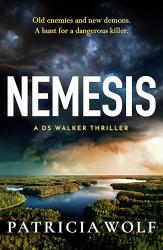
A DANGEROUS CHASE. A SADISTIC KILLER.
DS Lucas Walker is on assignment for the AFP, and it couldn't be more personal. This is his last chance to take down Stefan Markovich - the Vandals leader who tried to have him killed after Walker uncovered his drug operation, and has evaded justice for years.
Having tracked Markovich to Berlin, Walker heads to Germany to lure his nemesis out of hiding and into custody. And there is another draw for Walker in he finally gets to see Barbara again.
Still dealing with the trauma of her sister's ordeal in outback Australia, Barbara is working her own case - a suspicious death that casts a dark shadow over a peaceful lake colony. Everything about the horrific scene tells Barbara it's murder, and when a second body emerges she realises she is hunting a killer who is watching their victims die in agony.
As Walker and Barbara grapple with their cases, they must also face their feelings for each other - amid the constant threats of the world they inhabit.
Nemesis, Patricia Wolf
The 4th book now in the DS Lucas Walker series, those who are new to it might need a tiny bit of background. Walker is with the Australian Federal Police, but it was on his personal home territory, in outback Australia where he first met Barbara (in book one to be precise), when she heads from her native Germany to the area to look for her missing sister. Long story short, her sister endured an horrific experience, but survived, there was the spark of something between Walker and Barbara, and their lives moved on. Having kept in touch since that time, it's NEMESIS now that brings them back together on Barbara's home territory, in Berlin. She's working a mysterious multiple murder by plant toxins at a collection of rustic cabins lakeside, out of Berlin, and he's in town to try to catch the bikie Stefan Markovich that was also part of the earlier storyline.
Is this therefore a novel that won't work as a standalone? Not if you crave the full backstory to Barbara and Rita's ordeal, and Walker's involvement. If you're happy to let a lot of that just be, then yes, because the personal romantic tension / will they / won't they is a big part of this outing, as is Barbara's local case. It might help to have read the earlier books as well as the "fish out of water" aspects of this are tipped on their head here - deliberately - and there's a bit of a gotcha there in who handles what best.
But, Walker's in Berlin because the notorious Vandals motorcycle club leader Stefan Markovich has been tracked there. The whys and wherefore's of that are laid out at the start of the book, and then the action switches to the death of a man that is eluded to in the prologue. In an idyllic, rustic settlement made up of small off-grid cabins, a man dies horribly from a poisoning that is eventually identified as a plant based toxin. There are then more poisonings, and a local police service more than keen to make sure the Berlin incomers take the blame, rather than the local weirdo stalking around in the bushes. Meanwhile there's a developing romance between Barbara's sister Rita and her local offsider cop, and the will they / won't they thread around Barbara and Lucas. So quite a bit going on.
The local investigation is interesting, and it was great to get to "see" Barbara on her home turf, determined to solve this case in the light of feeling very much like her bosses don't appreciate her. Meanwhile Lucas is lurking alone, around the streets of Berlin, a country where he can't speak the language, with a cover story of being a forger, trying to flush Markovich in the face of a lot of disinterest from local police until a drive-by shooting is linked in, which leads to a bit more co-operation. To be honest a lot of the reasons for Lucas being in Berlin and the whole chasing Markovich thing didn't quite jell, it all felt a bit "hammered" into place to get Lucas to Berlin on any pretext so the relationship between the two could be explored. At one point I thought well just have him show up on a holiday and a romance fishing expedition - that would have worked as well, and not have had to led to some slightly distracting goings-on at one point around Barbara, and a final "storyline" which whilst had a bit of crash bang excitement about it, felt a bit plopped into place.
Which all makes this sound like the book wasn't an enjoyable read, which is unfair, because in most things it was. As a reader of the first couple of books, it was almost expected that there would be something between Lucas and Barbara and pushing that fish out of water angle to the other side was worthwhile. Her local investigation was also really well done, the use of plant based poisons really well explored, and the sense of place of those murders really strong.
Having said all of that, NEMESIS is definitely going to be a police procedural designed for people who like a hefty dose of tortured romantic attachment thrown in.
The Other Mother
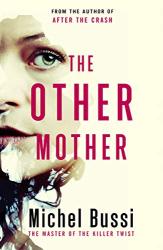
Malone, a child of four, starts to claim that his mother isn't his real mother. It seems impossible. The school psychologist is the only one who believes him and he's in a race against time to find out the truth . . .
The Other Mother, Michel Bussi
THE OTHER MOTHER and NEVER FORGET are two Michel Bussi novels that I'd somehow managed to miss reading, until I was reminded recently. Luckily the library had copies of both of them, so that gap, at least, has now been closed.
THE OTHER MOTHER is a very different undertaking from his other books read thus far (BLACK WATER LILIES, AFTER THE CRASH and DON'T LET GO) in that still a thriller in style, the format and approach of this one is very different, and it did take quite a while to get into the flow.
When four year old Malone starts claiming that his mother isn't his real mother, his school psychologist believes him. Despite a lot of evidence to the contrary, provided by his Malone's very annoyed parents, the psychologist persists. Meanwhile police have been trying to find survivors from a heist gone wrong, that left a lot of dead bodies in its wake. I, like many readers, will probably pick where this is going fairly early on, although just how it gets there is quite the ride.
What it turns into along the way is an exploration of family, relationships, loyalty, and the reliability of memory and longing, although this reader could have done without the male opinions on women who succeed "in a man's world" (frankly if the current world is theirs, they've got some explaining to do), but I digress.
The point of Bussi's writing seems to be to surprise, and the structure of this one, in particular did surprise. A lot. If you're new to this writer's work I'd probably suggest starting with one of the three mentioned above - this one involved a bit of heavy lifting and a trust in the author from past experience.
Never Forget
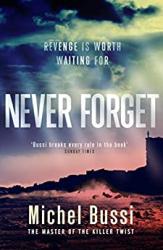
BEFORE
A man running along a remote clifftop path on an icy-cold February morning.
A woman standing on the cliff's edge.
A red scarf on the ground between them.
AFTER
The man is alone - paralysed by fear.
The woman is on the beach below - dead.
The red scarf is now perfectly - and impossibly - arranged around the woman's broken neck.
A handful of seconds. Two lives colliding.
WHAT HAPPENED?
Never Forget, Michel Bussi
THE OTHER MOTHER and NEVER FORGET are two Michel Bussi novels that I'd somehow managed to miss reading, until I was reminded recently. Luckily the library had copies of both of them, so that gap, at least, has now been closed.
NEVER FORGET (unlike THE OTHER MOTHER) is very much a return to previous thriller stylings in books like BLACK WATER LILIES, AFTER THE CRASH and DON'T LET GO.
The story starts out with a young Arab Para-Olympic contender, on a self-imposed training camp, running along a clifftop on the coast of France in 2014. After picking up an expensive red silk scarf caught on a fence, he then comes across a beautiful, but distressed and dishevelled woman, preparing to jump from the cliff. Despite his attempts to calm her and then draw her away from the edge, she grabs the proffered scarf and jumps to her death. Young Jamal is an easy, dare we say, convenient suspect, despite his prosthetic leg, and the very unlikely possibility that he's either a rapist or a murderer, especially when the reader discovers that two women had already been attacked in the same location, in the same manner, ten years before.
Already distressed by what he has witnessed, and then by being considered a suspect, he starts to receive envelopes with details about the prior murders and investigations, when he discovers that the latest victim is the spitting image of one of the women who were killed in 2004. Which leaves him conducting his own investigation, in an attempt to clear his name, and out of a sense of basic common decency.
In this novel Bussi is exploring not just rape, murder and overt violence, but expectations, aspiration, racism, and attitudes towards disability and difference. He does that in a twisty, dark, psychological thriller style, that will have your head spinning, and any sense of clarity and understanding blown out from under you chapter by chapter. It does beggar belief that despite the timings, despite the witnesses to this latest fall, and despite the unlikeliness of Jamal as a suspect - just based on the time gap between the three rapes and murders, that he would remain prime suspect for a nanosecond, but this is the sort of story where you just have to go with the flow, ride the peaks and troughs and stay with Jamal and his battle to discover the truth.
17 Years Later
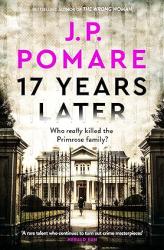
Is the truth sometimes best left buried?
A crime masterpiece by bestselling author J. P. Pomare
The violent slaughter of the wealthy Primrose family while they slept shocked the nation of New Zealand and scarred the small idyllic rural town of Cambridge forever.
All of the evidence pointed to their young live-in chef, Bill Ruatara, who was swiftly charged with murder and brought to justice. The brutal crime is now infamous, and Bill a figure of contempt who deserves to rot in jail for life.
Seventeen years later, prison psychologist TK Phillips is fighting for an appeal. He is convinced Bill did not receive a fair trial. When celebrity true-crime podcaster Sloane Abbott takes a sudden interest, it's not long before she uncovers new evidence that could set fire to the prosecution's case.
As TK and Sloane dig deeper into the past, they become tangled in a complex web of danger and deceit. With Bill's innocence far from assured and their own lives at stake, will they risk everything to unearth the truth, or leave it buried for good?
17 Years Later, J.P. Pomare
J.P. Pomare is one of those authors that always, always delivers a slightly different bent on the question "What on Earth is Happening Here?". From the confusion in the reader and character's minds in CALL ME EVIE, to the preconception twisting that's going on in THE WRONG WOMAN and the masterclass in misdirection that was HOME BEFORE NIGHT he's now added the combination of hindsight, expertise and podcasting and reworded the question slightly to "What on Earth Happened Then?" in 17 YEARS LATER.
The story is, on the face of it, a pretty straightforward one. The violent slaughter of a wealthy family when they slept, lead to the identification and lazy investigation of young live-in chef, Bill Ruatara, who was swiftly charged, and then convicted of murder. 17 years later, TK Phillips, a prison psychologist has now thrown a lot of his own life under a bus trying to get an appeal underway, before he walked away from Bill and his case. Then celebrity true-crime podcaster Sloane Abbott is guilted into taking an interest in a "non-white" crime, dragging TK with her, leading to the rapid, almost too easy discovery of new evidence and a potential legal binfire.
Which needless to say leads to more digging, and some extremely unhappy onlookers, with the threat to both Philips and Abbott starting to become very immediate, and an intricate web of small town connections that looks like it might be hard to break open.
Told in varying timelines and viewpoints, 17 YEARS LATER allows Bill Ruatara to have a voice in his own case - something that seemed to have been mostly ignored in the investigation. His viewpoint, and timeline, is all about the events that led up to the murder of the wealthy, English family, which gives the author a chance to reveal a lot about their background, and some dodgy dealings that have gone on before the family arrived in New Zealand. It also provides an insight into the life of a young man, a would be chef, from a poor background who tried to find a way to do the right thing by the girl he loved and ended up in more trouble than you'd think would be possible. The current day investigation takes you more inside the head and eyes of podcaster Abbott in some ways, as she actively pursues leads and tries to understand the time and the place that the murders happened in. Phillips provides historical context in that he's been on Ruatara's side for many years, as well as a conduit between Sloane and the man in prison, as well as expertise on human behaviours. And motivations.
There's a lot under the surface of this small town that doesn't like being stirred up by Abbott and Phillips, anymore than it liked what happened all those years ago. Rapidly paced, there's nothing transparent or easy about what could be seen as a pretty straightforward botched investigation, as more and more "what the" moments are revealed along the way. Racial and class bias, flaws, laziness, blindspots, and just plain old screwups are all explored, as are the ethics and motivations of true crime podcasters. Because it's a Pomare novel, at the end of it all, nothing is left behind in the dark.
The Body Next Door
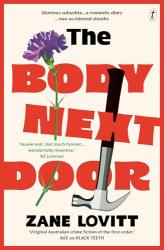
Everybody needs good neighbours…
When Claire Corral goes missing from her home on Carnation Way, her neighbour Jamie isn’t too concerned. He’s busy—caring for his dad, recovering from a broken heart and eating himself into a bigger pair of pants.
Then the police turn up.
Is Claire’s disappearance connected with the body found next door thirteen years ago? Does Jamie’s father, now grappling with dementia, know more about these events than he should? And then there’s Tess, equal parts mysterious and charming, who just moved in at number thirty-five…
As Jamie asks around, an unsettling picture begins to form. Perhaps quiet, respectable Carnation Way is home to the same secrets and heartaches as any other neighbourhood—with a few more murders thrown in.
The Body Next Door, Zane Lovitt
Whatever it is you've come to expect from a Zane Lovitt novel, forget it, this is an author who appears not care one jot for expectations. He appears, instead to care about writing wonderful, engaging characters of amazing variety.
His first novel, THE MIDNIGHT PROMISE, introduced John Dorn. Classic gumshoe, his woman has left him, he lives in the office, drinks too much, and specialises in lost causes, hopeless cases, the underdogs and the oppressed. As noted in the blurb - he was drawn to them “as a sledgehammer is to a kneecap.” Hardboiled, dark noir short stories.
Then BLACK TEETH, which had some of the dry darkness of the earlier novel, but bought to us Jason Ginaff, an anxious man who works from home, researching job candidates, whilst running a dedicated side project looking for his own father. Which leads him to get mixed up with somebody else looking for the same man, only Rudy wants to kill Jason's dad. Populated this time by likeable and unlikable characters there was a sly, dry sense of humour at the back of this novel in particular.
Which is, now that I come to think of it, a similarity (and I'm digging deep here) between that last novel and the current one - THE BODY NEXT DOOR. The tagline for this one is "Glorious suburbia ... a romantic diary ... two accidental sleuths", which should not, for a moment make you think cosy. It's not. It's populated with mostly pretty likeable characters, sure, it's a classic little closed off suburban street called Carnation Way, tucked away in the suburbs of Melbourne, full of houses with gardens out the front, cars parked on the street, kids playing, people popping in and out of each other's houses. and a surprising body count given the ordinariness of it all.
There are some families in this street with a lot going on. Young Jamie, has moved back in with his Dad Bruce, who is starting to show rapidly increasing signs of dementia - setting fire to the kitchen being the big red flag. But it kind of worked out okay for Jamie, his marriage was imploding anyway, and he loves his Dad, his odd ways, and the community he grew up in. There's still people here from when he was younger, and it feels, safe, and very normal. If you ignore the discovery of a dead young man under the neighbouring house years ago, and the sad and odd death of George. Much of which could be put down to bad luck, until the night that Claire Corral disappeared.
Claire's lived in Carnation Way for a very long time, long enough to have been there when young Lachlan's body was found, to have known Jamie's Mum Holly before she died, his dad when he was still teaching, and Yasmin before the twins were born, George when he discovered Lachlan's body, and everybody and everything else. Born in England, she'd moved to Australia with her first husband, but the marriage had imploded (Solly was a bit of a sod), and she's now got a new partner. And the reader knows all of this as chapters that make up Claire's diary form part of the narrative, going back over the years, talking about the time the body was found, suspicions and resolutions, and not quite enough detail to explain why she's now vanished, but more than enough hints to suggest she might have known quite a bit.
Yasmin is one of Claire's best friends, with twin boys, a busy career and an ex-con-ex-husband who was a real snake in the grass, until Claire saw him off. George on the other hand had been a harmless, kind old Greek man who unfortunately smelt something odd from the house next door, and then, after the trauma of finding Lachlan's dead body, died tragically in a car accident on the Great Ocean Road, one of those weird bits of irony that happen, given he had been the driving instructor who taught all the kids how to drive. Mind you, nobody ever did really fully explain how it was that somebody, unknown to all of them, ended up getting murdered under a house in a quiet little St Albans street.
The contents of Claire's diaries would have have been useful for Jamie to know as Tessa moves into the house where Lachlan's body was found, and the connections between her and Claire come to light, about the same time that Jamie starts to feel a bit like life might be worth living again, only what is Tessa really up to, and what do the ramblings of a demented old man actually mean? And why on earth would somebody as "normal" and everyday as Claire just vanish like that?
Told with enormous affection and a gentle, almost kind regard for his characters, Lovitt has this time served up a cast of characters who might have some deadly secrets, but in the main are pretty "ordinary". The major darkness in this novel turns out to be the blinkered viewpoints that have persisted, and those crawl spaces under all those houses. Turns out that glorious suburbia is only glorious when you keep those blinkers firmly taped to the side of your head. Because taking them off gives Jamie and Bruce a whole different outlook.
Ripper
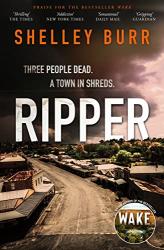
Gemma Guillory knows her once-charming town is now remembered for one reason, and one reason only.
That three innocent people died. That the last stop on the Rainier Ripper's trail of death seventeen years ago was her innocuous little teashop.
She knows that the consequences of catching the Ripper still haunt her police officer husband and their marriage to this day and that some of her neighbours are desperate - desperate enough to welcome a dark tourism company keen to cash in on Rainier's reputation as the murder town.
When the tour operator is killed by a Ripper copycat on Gemma's doorstep, the unease that has lurked quietly in the original killer's wake turns to foreboding, and she's drawn into the investigation. Unbeknownst to her, so is a prisoner named Lane Holland.
Gemma knows her town. She knows her people. Doesn't she?
A Divine Fury

Florence. Autumn, 1539.
Cesare Aldo was once an officer for the city’s most feared criminal court. Following a period of exile, he is back – but demoted to night patrol, when only the drunk and the dangerous roam the streets.
Chasing a suspect in the rain, Aldo discovers a horrifying scene beneath Michelangelo’s statue of David. Lifeless eyes gaze from the face of a man whose body has been posed as if crucified. It’s clear the killer had religious motives.
When more bodies appear, Aldo believes an unholy murderer is stalking the citizens of Florence. Watching. Hunting. Waiting for the perfect moment to strike again . . .
Outrageous Fortunes
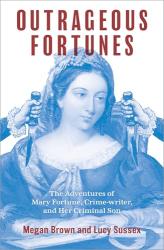
The gripping story of Australia's first female crime writer and her career-criminal son
When Mary Fortune arrived in Melbourne with her infant son in 1855, she was determined to reinvent herself. The Victorian goldfields were just the place.
After a time selling sly grog and a bigamous marriage to a policeman, Mary became a pioneering journalist and author. The Detective's Album was the first book of detective stories to be published in Australia and the first by a woman to be published anywhere in the world. Her work appeared in magazines and newspapers for over forty years – but none of her readers knew who she was. She wrote using pseudonyms, often adopting the voice of a male narrator to write about 'unladylike' subjects.
When Mary died in 1911, her identity was nearly lost. In Outrageous Fortunes, Megan Brown and Lucy Sussex retrieve Fortune's astonishing career and discover an equally absorbing story in her illegitimate son, George. While Mary was writing crime, George was committing it, with convictions for theft and bank robbery. In their intertwined stories, crime fiction meets true crime, and Melbourne's literary bohemia consorts with the criminal underworld.
The Forsaken
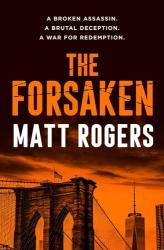
For ten years, Logan Booth served as a contract killer for the CIA – he just never knew it. The first book in a blockbuster thriller series from Matt Rogers, million copy bestseller and 'a bright new talent shaking up the genre ' (Candice Fox). In the twilight of his career, Logan learns he has been a vessel for furthering government interests, not a rogue hitman for a band of vigilantes. The revelation destroys him. But when Jorge Romero – an investigative reporter and Logan's oldest friend – is brutally and inexplicably murdered, Logan allows his fury to deliver him from despair. With an ally in Alice Mason, a homeless witness with a target on her back, Logan goes to war. Against whom, he isn't sure, but he knows powerful forces are at work behind the scenes. Now, to deliver justice, Logan and Alice must confront their demons and win a savage battle that could destroy their lives ... even if they survive.
The Forsaken, Matt Rogers
Sitting down to read THE FORSAKEN (late to the party as usual), wasn't at all sure what to expect. The blurb explains that for ten years, Logan Booth, served as a contract killer for the CIA, never knowing that was what he was doing. Finding out he wasn't a rogue hitman for a band of vigilantes, but rather a means by which governments of the USA furthered their own interests is .. well it's a lot. Starting out reading a book about somebody who is fine with the killing bit, but very particular about the motivation element is something to think about.
Although to be honest, thinking about motivations, morals, rights and wrongs, became somewhat secondary to the wild, bare-knuckle, no holds barred, violent, extreme and, uncomfortably horribly train wreck that became an equally uncomfortably enjoyable crazy ride, that is Logan Booth, and just about everybody who comes into contact with him.
Don't get me wrong - this is NOT a novel for the squeamish, or violence intolerant. It's also not a novel that's necessarily going to drag readers into deep contemplation of human nature and the choices we make. Only, it kind of is that latter bit. You can "get" how it would be that somebody who thought they were a lone-wolf, vigilante killer with a "reason" for the job, might be more than a bit miffed to discover that a government was pulling the strings. Grey, faceless, suit wearing, desk sitting behind men who were simply powering through anybody or anything that they felt was in the road of their aims and machinations. It's easy to see how that would screw up your head just a little, and acceptance of that is helped by Logan Booth being a great character. Superhuman freaky violent, dangerous, utterly controlled and clear headed about what he's doing, he's also oblivious to pain, mad, bad, and more than a bit crazy, alcoholic and suicidal, and he's had a lot going on. So he's not at all pleased when people won't just bugger off and leave him alone. Then, they murder his oldest, only really, friend and the switch from despair to fury saves him, although it makes life very short for a lot of other people.
Picking up a most unexpected ally along the way in the person of homeless, crack addict, Alice Mason, Booth starts out avenging his friend's death, making sure that whoever killed him doesn't get Alice as well, and generally dishing out a bit of vengeance and justice for everybody and everything, before he finds himself chasing corruption, money, influence and rotten power into a lot of dark corners. All while facing the same sort of demons he's insisting Alice front up to as well.
As weird as this sounds, this was a thoroughly enjoyable, absolutely engaging, enthralling, extremely violent, over the top thriller with great characters and a core of humanity in amongst the blood, sweat, flying teeth, gunshots, broken bones, flying bodies, falling bodies, tripped over bodies, and corruption. As always it comes down to corruption and the pursuit of money.
The Secret of the Angel Who Died at Midnight
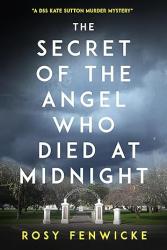
In the quiet wine-growing town of Martinborough, Detective Senior Sergeant Kate Sutton is called to investigate the murder of respected local physician Dr. Geoffrey Scott. Found dead in his own garden, the doctor's death sends ripples of unease through the close-knit community.
Recently divorced and still settling into her new home, Kate methodically begins to piece together the puzzle. As the investigation deepens, she discovers unexpected connections to the three-year-old disappearance of a young French woman—a case that has lingered unresolved in her career.
In this meticulously crafted mystery set in New Zealand's picturesque Wairarapa region, Rosy Fenwicke delivers a compelling police procedural that rewards careful attention and offers satisfying twists in the tradition of classic detective fiction. As Kate follows the clues to their logical conclusion, she discovers that even in the most idyllic settings, the past never truly stays buried.
The Secret of the Angel Who Died at Midnight, Rosy Fenwicke
The first in a new series from NZ author Rosy Fenwicke, THE SECRET OF THE ANGEL WHO DIED AT MIDNIGHT is a police procedural novel introducing DSS Kate Sutton.
Set in a wine-growing region of New Zealand, the sense of place in this one is pretty strong, drawing on a small town, with tensions between the old residents and newcomers staying very close to home. The victim in this novel is the local GP, Dr Geoffrey Scott, a man who has taken over his father's practice, a well known figure in the small community in which he's lived his life, his wife being the incomer. Younger, an artist, and right from the start seemingly somebody very different from her quiet, garden loving husband. Turns out that the relationship between these two is complicated, as it the truth behind Dr Geoffrey Scott's own position.
The investigation itself centres around recently divorced, and adjusting to a very different life, DSS Kate Sutton. She's got a supportive boss, a resentful underling, one son who remains close, one who is distant and an ex-husband who, frankly, sounds like a bit of a dick. She's also got a mostly absent, very eccentric father who arrives out of nowhere whilst Sutton is knee-deep in investigation problems and really not in the mood. Particularly when he temporarily moves into the spareroom in her brand-new townhouse, although his presence does somehow smooth the path between Sutton and her youngest - part just a grumpy pain in the rear teenager, part the victim of a fairly acrimonious divorce.
The balancing act achieved between a complicated investigation - mostly because of what seems like a decidedly absent list of potential suspects - and the personal is good in this one though. The reader is allowed to get to know Sutton easily, as she navigates the complications of leading what turns into a pretty high profile case, at the same time that she works out how to start living on her own after many years juggling the job and the demands of a family. When a potential suspect does come to light, the pressure ramps up as the chance to arrest him is blown, and a second murder really makes the residents of this small town very twitchy. It's really only constant digging, and pushing and looking for things out of place, that ultimately connect events around the disappearance of a young French backpacker three years before, and the current murders.
In a police procedural style novel, readers will be looking for a believable investigative scenario, something not necessarily new, but well delivered, and increasingly a good balance between angst and hard work, inspiration and solid investigation. All of which THE SECRET OF THE ANGEL WHO DIED AT MIDNIGHT delivers well. The characters are good, the tension within the team believable and the slightly different angle of supportive boss / tricky colleague is a nice touch. As were the complications about the victim that were revealed as the case went on, and the way that the problems in his life took a while for people to be willing to talk about.
I think I saw somewhere that the second novel in this series is due out early in 2026, which is very good news as this is definitely a series worth keeping an eye out for.
The Deeper the Dead
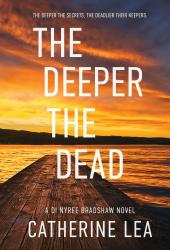
On the morning of her granddaughter’s first day of school, DI Nyree Bradshaw receives a chilling call: there’s been a double homicide on a private island in the Far North. One victim is the woman who inherited the island over her two brothers. The other victim is unknown.
As Nyree and her team begin their investigation into the murky labyrinth of greed, betrayal and bitter disputes that surround the ownership of the island, they make a shocking discovery: a search of the vicinity unearths the remains of a child who vanished twenty years before.
Old resentments and long-held secrets boil to the surface of the close-knit town, leaving Nyree to ask: Is the child’s killer on the loose again?
The Deeper the Dead, Catherine Lea
THE DEEPER THE DEAD is the third book in the New Zealand based police procedural series feature DI Nyree Bradshaw at the centre of a personal and professional storm. This is definitely one of those sets of books that would be worth reading in order, Bradshaw has a backstory which will allow readers to see the full picture behind the storm that is going on in her personal life, although you can definitely see the impact.
In the last book in the series Bradshaw found herself sort of guilted / sort of keen to accept custody of her very young granddaughter, whose mother had recently died. Her father, Bradshaw's son, is in jail but even before that she had a fractured relationship with him, and would be the first to admit that motherhood wasn't her thing, but police work, and solving crimes most definitely is. So taking on a young girl's care and welfare right now is quite the thing, especially as she's still flat out with cases, and the social workers are hovering. Not a great combination for Bradshaw's often tetchy temperament, especially as the current case is a double homicide on a private island in the Far North. An island that can only be reached by boat, which is wet going. And the weather's generally wet, and somebody's taking liberties with her crime scenes, and paying very fast and loose with the truth.
Victim number one of this double homicide is the young woman who owns this island, courtesy of the contentious will of her recently deceased father. Ownership which annoys the hell out of her two brothers, and continues to be a cause of considerable grief for the local Māori people, who hold the island sacred not least of all because of the ancient burial grounds. Burial grounds which reveal a much more recent body - that of a young child who vanished twenty years earlier. The second victim, also brutally shot and left where he fell, is initially an unknown, slightly mysterious young man who doesn't seem to have had a reason to be there, or much by way of connection to the island or the family at the heart of all this.
How Bradshaw handles this messy, complicated case, which has lots of aspects of a locked room about it, and then not, as movements to and from the island start to look very complicated, and way too suspicious for her liking, is a bit of a masterclass in juggling. Juggling all the leads and non-leads, juggling the information that is and is not forthcoming, juggling her granddaughter's needs and, it has to be said, demands as they both adjust to this new life. And juggling the expectations of everybody who has an opinion about her, her life, her family and the job.
She's a prime example of a woman who is forced into biting off more than she can chew and then chewing like hell. I really like the way this character is always vaguely chaotic but in control, just. Always aware of the things that are a bit off, a bit wrong, and more than a bit on the nose. Be it old or recent murders, crime scenes that turn to ash, locked rooms that aren't, past and present tensions, and people sending strange signals.
What she does from here - on the personal side is anybody's guess, as at one point I did think there was a glimmer of something on the horizon in terms of family and support, but then it moved away again. It will be interesting to see if Bradshaw decides to take to family problems as firmly, decisively and sheer doggedly as she does the professional ones.
The Wolf Who Cried Boy
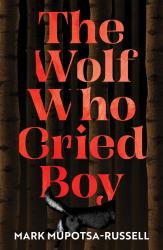
‘If you know where to look, kiddo, the world is full of magic and monsters.’
Six-year-old Henry believes his life is a fairytale. He’s a Star Prince, his mum is a Star Queen and they’re hiding from Henry’s father, the mysterious ‘Wolf King’.
When news arrives that his Grandma is gravely ill, Henry and his mum must take a road trip across the country and back into the Wolf King’s orbit. Henry isn’t afraid: he knows his magic powers will save them. But as the King draws ever closer, Henry’s world starts to fall apart. Who is the real baddie in his life? Who can he trust? And why don’t his powers seem to work?
In this astoundingly original story of heroes, villains and the messy reality between them, a world of violence and fear can be wildly funny and streaked with magic. Through its unforgettable narrator, The Wolf Who Cried Boy explores how cycles of violence, misogyny and corruption must be broken if we ever want our children to grow up free.
Twisted River
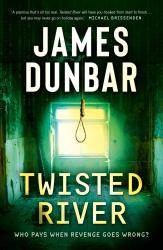
It’s not only the guilty who have something to hide.
When charity worker Cate and website designer Rory, a married couple in their thirties, return from their European holiday, they make a nightmare discovery. Their credit cards have been cancelled, their bank account has been emptied, and their phones and internet have been cut off. Their home in the New South Wales coastal town of Kiama has been rented out as a holiday let, and their dog and pet-sitter have disappeared. Meanwhile, Cate's work colleagues have received copies of her handwritten resignation letter, posted from Paris, filled with insults and lurid allegations.
The pain isn't over yet, not by a long shot. Someone has set out to destroy Cate and Rory Porter's lives - and their anonymous enemy's motivations are a mystery.
As the harassment ramps up, some likely suspects emerge. Is it the anti-vax campaigners who have already targeted them over Rory's website for dog owners? Or maybe a pro-Russian activist who objects to Cate's work with Ukrainian refugees?
To make matters worse, the local police seem suspicious of their allegations. Cate and Rory quickly realise the only way to reclaim their lives - and their beloved poodle cross, Iris - is to find their tormentor themselves. And it isn't long before things turn dangerous. Deadly dangerous.
Full of sinister twists and turns, dark humour and a fascinating cast of supporting characters from society's shadowy fringes, Twisted River will grip you until the final cliffhanger ending.
Add comment